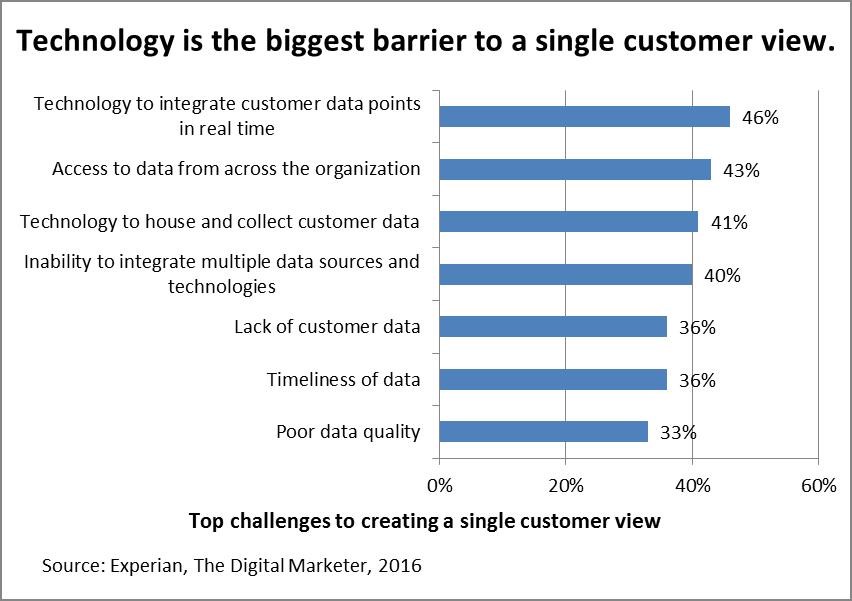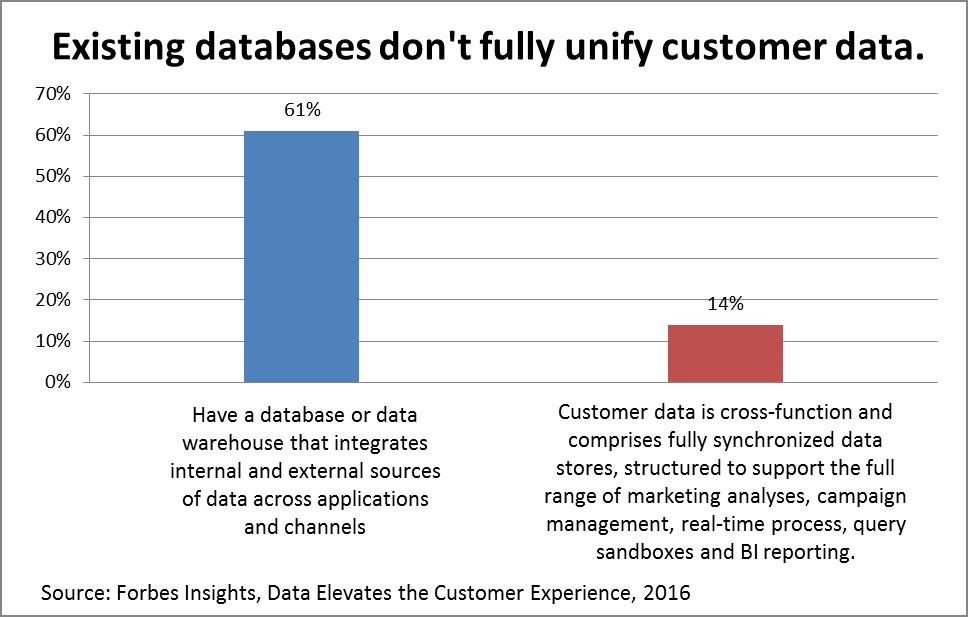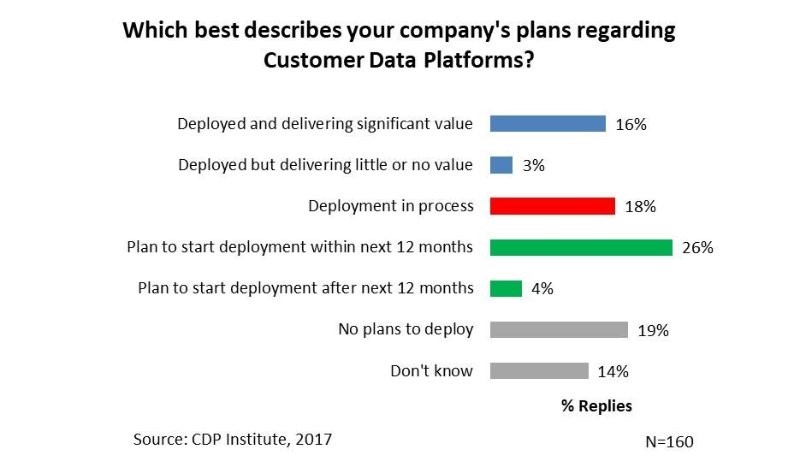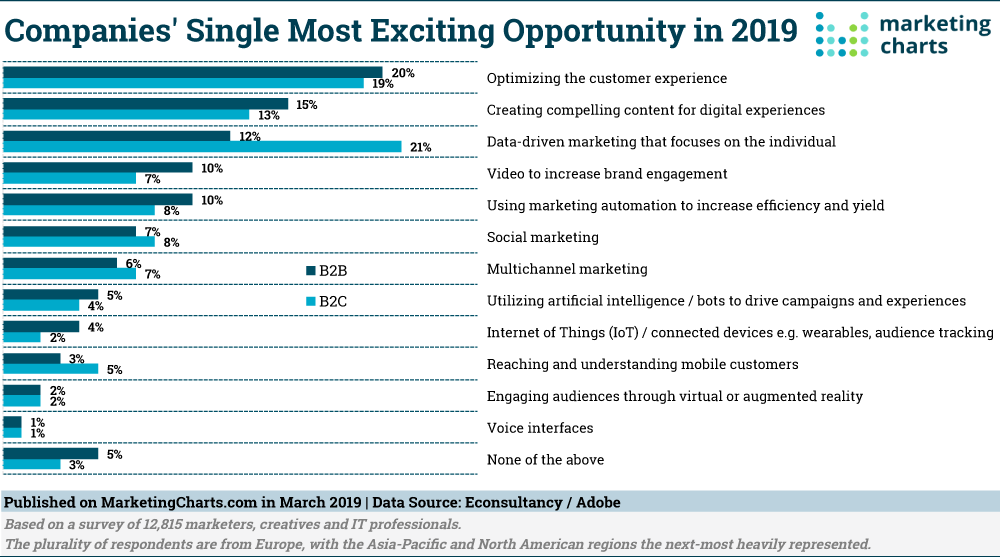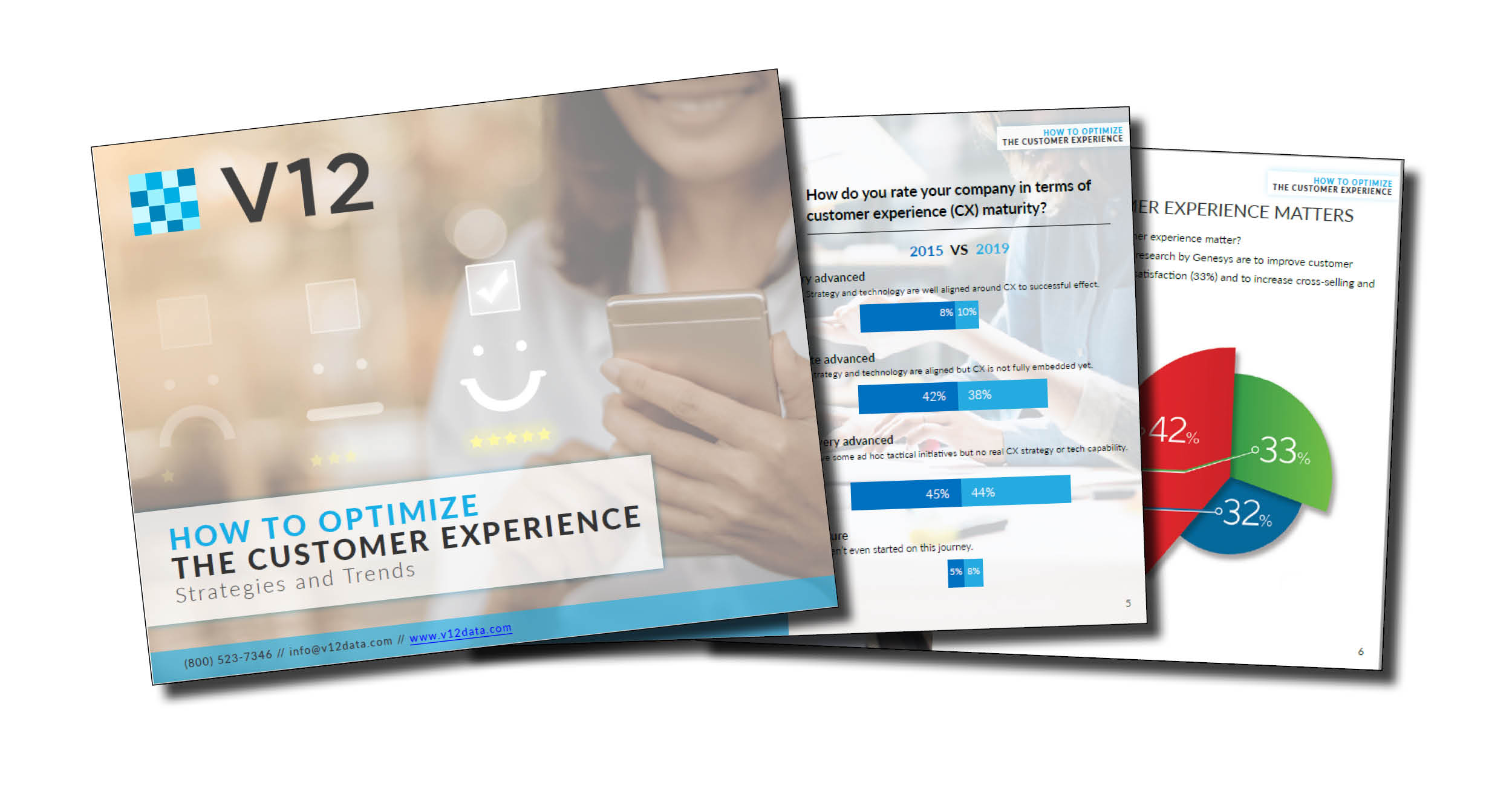Understanding who your customers and prospects are is one of the most critical factors to retaining and acquiring customers. Consumers today want to be understood across channels and receive the same personalized experience wherever and whenever they decide to interact with a brand. However, marketers are challenged when it comes to gaining these insights with close to 50% stating the biggest challenge is from siloed data. (Arm Treasure Data)
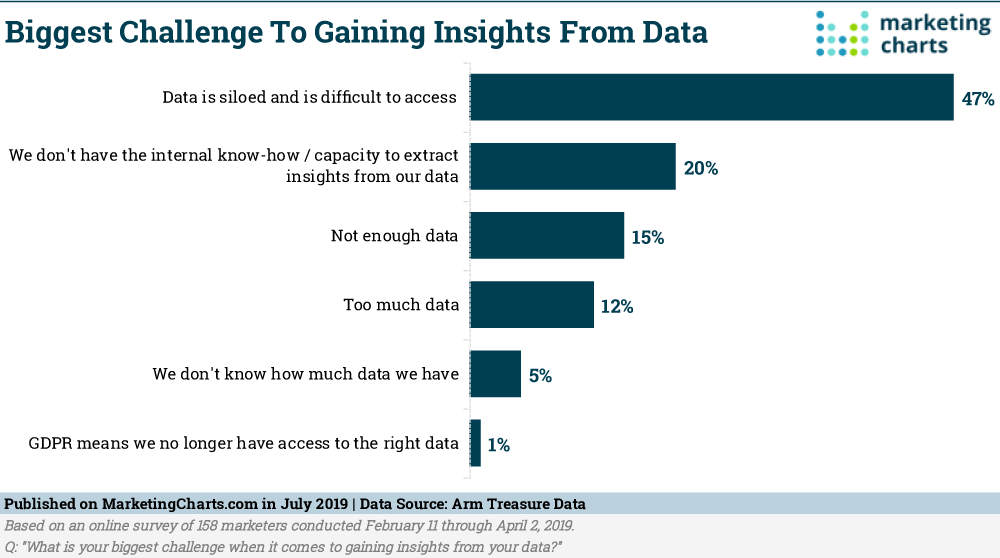
Even when the data is accessible, more than half of the survey respondents (54%) say that the biggest barrier to leveraging the data they do have their hands on is that it too is fragmented or siloed. Another one-fifth (20%) say they don’t understand what the data means while 17% say they don’t have the ability to act on the data and make decisions on the trends they see in the data.
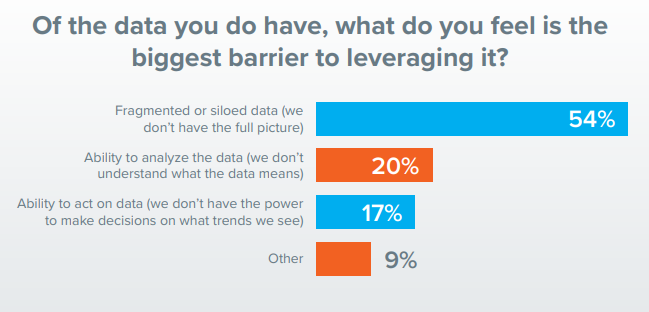
Data integration challenges are only going to become more cumbersome if action isn’t taken. With the sheer number of marketing technologies available on the market today, this number is going to continue to grow exponentially. In its marketing trends for 2018, Marketo highlights a Forrester study predicting that the approximately 100,000 software vendors of today will grow to 1 million hyper-specialized companies by 2027. Oftentimes, each of these martech instances store their own set of data, only compounding the problem of existing data applications.
Technology to Combat Siloed Data
In research by Experian, 46% of marketers stated that technology was the biggest barrier to integrating customer data. An additional 43% pointed to data access across the organization and 41% stated that technology to house and collect customer data was a challenge.
In another study by Forbes Insights, survey respondents may have a database but their existing database doesn’t fully support their data unification needs.
Customer Data Platforms for Data Integration
An increasing number of brands are implementing customer data platforms to overcome the challenge of data siloes and to rapidly integrate data from any number of sources, both offline and online. Agile in nature, CDPs are able to gather all these sources of data and give brands a 360-degree customer view in order to provide high quality, personalized experiences.
According to research by the CDP Institute in 2017, 26% of companies planned to start implementing a CDP within 12 months and 18% already had a deployment in process. This number has only risen as more companies are realizing the importance and competitive advantage a CDP can bring.
Data Integration to Improve the Customer Experience
Customer experience is top for mind for marketers with 20% of B2B and B2C marketers stating that optimizing the customer experience is one of the most exciting opportunities this year.
In order to provide exceptional customer experiences, data siloes must be unified to gain a complete view of the customer. Brands must be in control of their data at all times to derive insights into their customers’ likes, dislikes, behaviors, and potential purchases.
With an integrated customer view, customer experiences become even more powerful through the application if predictive analytics. Take a look at some of these statistics: (source)
- 70% of enterprises have increased their spending on real-time customer analytics solutions over the past year.
- 58% of enterprises are seeing a significant increase in customer retention and loyalty as a result of using customer analytics.
- 70% of enterprises have increased their spending on real-time customer analytics solutions over the past year.
- 58% of enterprises are seeing a significant increase in customer retention and loyalty as a result of using customer analytics.
- 60% use real-time customer analytics to improve customer experience across touch points and devices is extremely important today.
- 44% of enterprises are gaining new customers and increasing revenue as a result of adopting and integrating customer analytics into their operations.
- 39% of enterprise execs consider IoT an important technology today for improving customer experiences increasing to 55% in two years, making it one of the fastest growing systems for customer analytics.
Brands who are adopting customer analytics are able to provide personalization at scale and even implement machine learning algorithms that learn when and how to offer upsell and product recommendations, adjust pricing based on demand and competitive pricing strategies. However, strategies such as these are only possible with a data integration strategy to create consistent customer views.
Integration of marketing data and creating a “singular view” of your prospects and customers is one of the most critical steps to undertake in order to achieve any number of business objectives such as customer acquisition, retention, loyalty, upsell and cross sell.
Interesting in learning more about marketing strategies and tactics to help you boost your marketing strategies? Download our free customer experience ebook.
